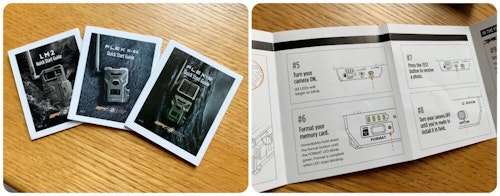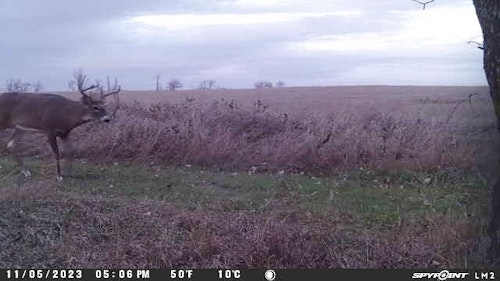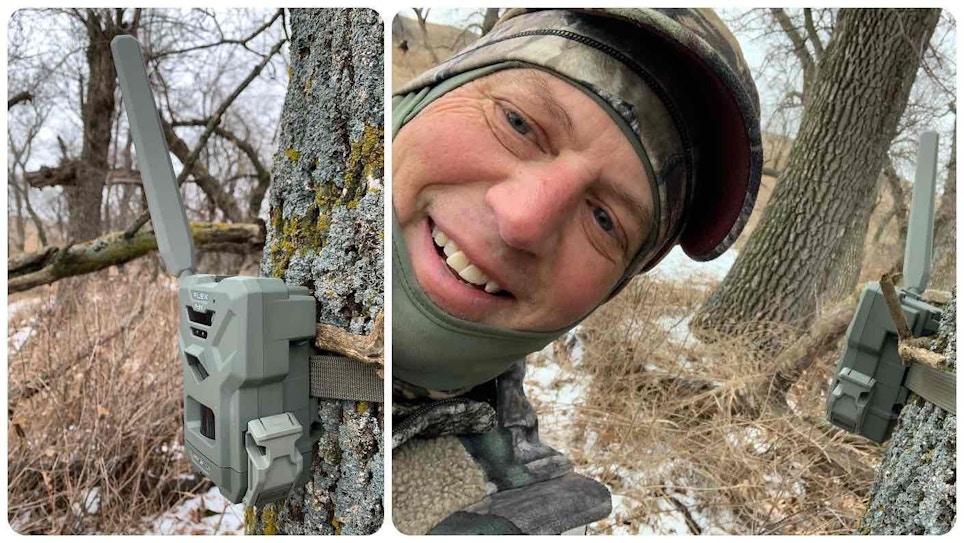Trust me — I fully understand that a single-season field test of deer gear isn’t foolproof. Anyone who spends a couple hundred bucks on a cellular trail cam, or twice that amount on a top-notch camo jacket and pant, will expect many years of outstanding performance.
But I think you’ll understand if I say, “Ya gotta start somewhere.” In other words, I doubt you’re interested in waiting 5 years for me to write this review of SpyPoint cell cams. So let me dive right in.

Deer season 2023 marked my third year of placing SpyPoint cell cams in the whitetail woods. (Click here to read my review of the SpyPoint Flex cellular trail camera during the 2022 archery deer season.) As in the past, I placed SpyPoint cell cams in a South Dakota river-bottom, but one part of my latest test that was different than the year before is I ran my cameras for longer. In fact, as I write this in late March, I have four SpyPoints still taking pictures daily. Specifically, I’m running two LM2s, a Flex G-36 and a Flex-S. Now, I know you’re fully capable of visiting the SpyPoint website to learn all about these camera specs and features, so I won’t dive into it here. Instead, I’ll talk about performance. In a word — outstanding.
Simple Startup
As I explained in my review from 2022, I’m not tremendously tech savvy. I’ve been running trail cams since the days of loading 35mm film in bulky models powered by several size D batteries, but I haven’t exactly stayed on the cutting edge of trail cam technology through the years. I was apprehensive about getting into the cell game, but I’m happy to report that it’s rather simple, even for an old school deer hunting like me.

After getting the SpyPoint app on your phone, you simply follow the easy-to-understand step-by-step instructions on each cam’s Quick Start Guide. Each of your cams will then appear on your phone (on the app), and it’s there that you choose settings such as when and how often you want the cam to transmit pics to the app, time delay between taking images, photo resolution, sensitivity, etc.
SpyPoint offers a few different data plans; I went with 250 images per month per camera, but during late October and through November, when whitetail activity increased dramatically in my SoDak river-bottom, I paid a few dollars extra to increase the monthly photo plan to 1,000 images.
The Solar Solution
As I stated earlier, the performance of my four SpyPoints (three different models) was outstanding during 2023, and that is continuing into 2024. I placed the cams in early September, so each one has been running for 7 months. In early December, I changed batteries (eight AAs per cam) on all the models except the Flex-S, which still to this day shows 100 percent battery life. The reason? Well, the “S” in Flex-S stands for solar, and it obviously works amazingly well at keeping the cam’s internal battery charged (the internal battery is separate from its eight AAs).
While it’s true the Upper Midwest didn’t experience a crazy-cold winter, it was still winter, with plenty of days in the single digits and at least a handful of days below zero, including a couple in the minus 20 degree range. These brutally cold days are typically a death sentence to batteries, but the small solar panel connected to the top of the Flex-S didn’t skip a beat.


Prior to my field test, I would have believed the Flex-S could make it from September until Christmas without changing AA batteries, but I would have guessed that the existing battery level would be around 50 percent. But 100 percent? I can’t understand how that’s even possible — truly impressive!
Note: Per the Flex-S instructions, you want to install the cam in a spot where the solar panel receives at least 4 hours of direct sunlight, so I placed it on the south side of a tree in the river-bottom. I didn’t seek out an open spot with no canopy; it’s in the woods. But clearly, it is getting enough sunlight to keep the internal battery in perfect condition.
Key Takeaways
I’ll finish my review of the SpyPoints by covering a handful of key takeaways — and lessons learned:
All three models I tested are extremely sensitive, even with the sensitivity set to low (verses medium or high). You won’t miss anything that passes in front of these cams. That’s a good trait, provided you do your work initially by cutting away tall weeds, brush and branches that could move on a windy day within the cam’s detection zone. The LM2 is advertised to have a detection and flash range of 90 feet, while the Flex G-36 and Flex-S have a range of 100 feet. In my experience (thousands of images), this is correct. Often I’d have to look far in the background of a pic to see a distant deer (or squirrel or raccoon) that triggered the camera.

When I first set up my cams, I programmed them to send pics to the app once per day (noon), and had each cam set to take pics with a delay of only 10 seconds. My reasoning was I didn’t want to miss capturing a pic of a rutting buck trailing a hot doe. Well, this is good in theory, but it doesn’t take into consideration you’ll get pics of squirrels, rabbits, raccoons, coyotes and birds. Also, I thought I’d done a decent job of clearing debris from within one cam’s detection zone, only to learn it transmitted hundreds of images of blowing tall weeds to the app — pics taken every 10 seconds! I shouldn’t have to explain that you don’t want 200 pics of blowing weeds during the first day or two of the month when you’ve purchased 250 pics for the entire month.
A good way to avoid this mistake is to be extremely conservative when you first program a camera. Instead of having a cam transmit pics to the app only once per day, program it to transmit three or four times per day. That way, you can troubleshoot a problem (for example, blowing weeds) sooner rather than later. Similarly, right out of the gate, set the delay at 10 minutes, or even 30 minutes. You can always change it to 1 minute — or 10 seconds — in the future, right from the app. Programming a cam in this way will allow you to learn if you have the setup correct (clean detection zone) without burning through your allotted monthly pics.

Regarding the photo plans: As I said previously, I bought the 250-pics-per-month plans, and increased it on a couple of hot cams to 1,000 images per month during the whitetail rut. (FYI: When you increase it mid-month, you pay only the difference in plan prices, which is nice.) If you choose not to increase the photo plan, and your cam hits the maximum before the end of the month, it’ll keep capturing images and saving them to the required microSD card (not included), but it will not transmit them to you. And this is true for when your cam’s next monthly plan begins; it will not transmit old “banked” images to the app. The only way you’ll see those pics is to pull the card.

I’m very impressed with the photo quality of all three SpyPoint cell cam models I am still running in South Dakota. The daylight images have great color and detail, and the nighttime infrared pics clearly show me everything I need to see (antler characteristics, etc.).
Final Thoughts
You should know that I didn’t have a single hiccup with any of my four SpyPoint cell cams last fall and winter, and now moving into spring. I never had to switch a microSD card due to some gremlin issue, and no cam ever was inundated with rain or bugs.
Dependability of the cams, and the app, was five stars.







